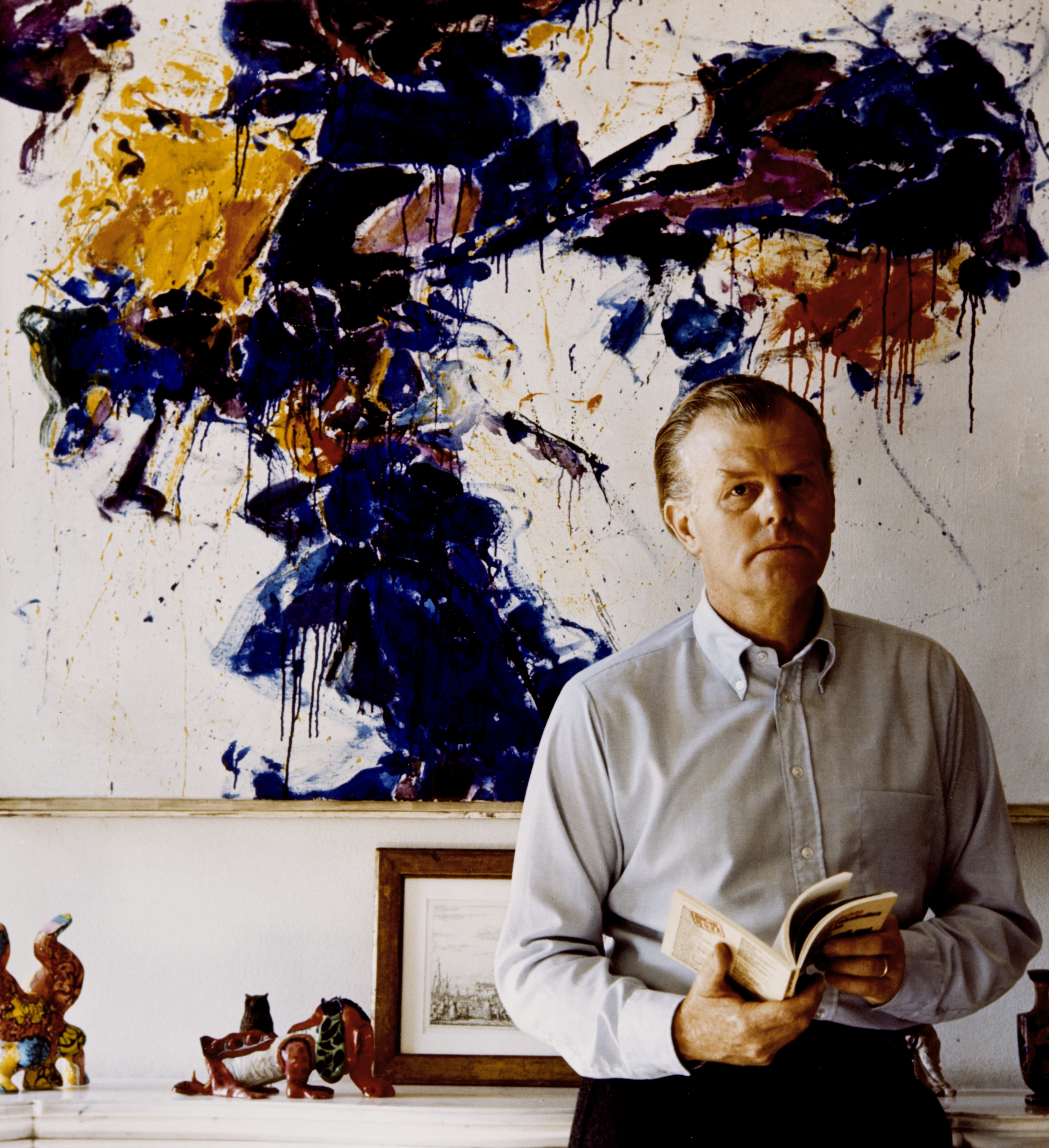- EN
Log in
- Live Auctions
- Past auctions
- More
- Gallery
- Art Dealing
- Publishing
- Kornfeld today
- The Story of Kornfeld
- Information

Over the course of his long life, Eberhard W. Kornfeld (1923–2023) amassed one of the most important private collections in post-war Switzerland. At its heart are works on paper from six centuries and works by artist friends. Ebi, as everyone called him, already had a passion for collecting as a child, initially collecting coins and small archaeological artefacts.
In February 1945, after basic commercial training, he began an internship with the renowned graphic art dealer Dr August Klipstein in Bern. During the summer months, he visited print cabinets in Basel, Paris, London and Amsterdam, among others, and continued his self education. Kornfeld was an exceptionally bright student and employee, so much so that Klipstein entrusted him with more and more projects, eventually hiring him permanently. From then on, art sparked Ebi’s interest in collecting.
When Klipstein died unexpectedly in April 1951, Frieda Schuh and Ebi took over the company, together with the Klipstein family. A few years later, Ebi became the sole managing director and gradually acquired a majority stake in the company, which he finally ran under his own name from 1972.
During Ebi’s time, the Kornfeld auction house became an important and respected player in the international art market, far beyond the graphic arts and Swiss borders. Until he was 99, Kornfeld came to his office in the Villa Thurmau on Laupenstrasse in Bern almost every day. There are probably few art dealers who have held nearly as many works in their hands as Ebi in his long life as a dealer and collector. Taking into account his published auction, storage and exhibition catalogues, as well as all the works not sold at auction, there must be several hundred thousand pieces that he examined in detail for their importance. And as he had a unique memory for images and materials, he immediately memorised all the nuances and deviations. His impressive and in-depth expertise made him a widely respected ‘scholar dealer’, a dealer who pursued his profession as a walking art encyclopaedia, with an immense wealth of knowledge and experience.

Ebi’s knowledge and passion for collecting resulted in an important and wide-ranging collection of works from the Middle Ages to the present day. He always combined his work as an art dealer with his own collecting. Initially, he collected drawings and old master prints, soon followed by 19th century and modernist works on paper. When there was renewed interest in the forgotten Austrian artists Gustav Klimt and Egon Schiele or the Norwegian Edvard Munch in the 1950s and 1960s, Ebi was at the forefront and acquired outstanding works for his own collection. Apart from Ernst Ludwig Kirchner, who he specialised in (cf. auction catalogue 279, Ernst Ludwig Kirchner from the Eberhard W. Kornfeld Collection), he acquired only a few expressionist and modernist oil paintings.
Kornfeld, however, was not only an auctioneer. As a gallery owner and art dealer, he also cultivated close and friendly business contacts with artists of his time such as Alexander Calder, Marc Chagall, Sam Francis, Alberto and Diego Giacometti or Pablo Picasso, to name only a few. Over the years he built up an extensive collection of their works, some of which were given to him by the artists themselves.

Ebi also shared his vast knowledge with others, writing and publishing epoch-making catalogues raisonnés. He thus set new standards, and today experts, dealers and collectors all over the world use so-called ‘Kornfeld numbers’ to classify and describe the states of prints by Paul Gauguin, Alberto Giacometti or Paul Klee. Publishing and editing catalogues raisonnés also opened up new areas of collecting: from then on Kornfeld also bought prints and rarities by Chagall, Gauguin, Giacometti, Kirchner, Kollwitz, Picasso and Signac.
Kornfeld collected in two directions. On the one hand, he collected with completeness in mind. This is obvious when one looks at the prints. But he also collected with a view to ‘importance’: selected works that he considered significant from an art historical perspective and that he wanted to call his own.
This special catalogue brings together 50 unique masterpieces from the collection. Paintings can be found alongside sculptures, drawings and prints. The works are arranged as freely as Ebi Kornfeld lived with his art; visitors to his home were overwhelmed by the vast amount of art from many centuries that was hung on the walls or piled up on the floor. He purchased art with an unerring eye for the special and unique, coupled with his legendary connoisseurship.

And he wanted large parts of his collection to pass into new hands after his death. Although he bequeathed a few selected pieces to museums, the remaining works should not be lost in a museum storeroom, but continue to delight collectors in the future. His eclectic collection of works, built up over more than 70 years, should go to people who love art as he had loved it during his long life. This is a unique opportunity to acquire works meticulously collected by a legend and thus become part of art history.
The present catalogue is dedicated to our company’s namesake, to whom we owe an immense debt of gratitude: he was our teacher and mentor, he was our boss and dear friend, and he shaped our company with his unique personality well into his old age. We would like to thank the Kornfeld family for their confidence in our company, which we will continue to lead into the future in Ebi’s spirit.
Online Catalogues